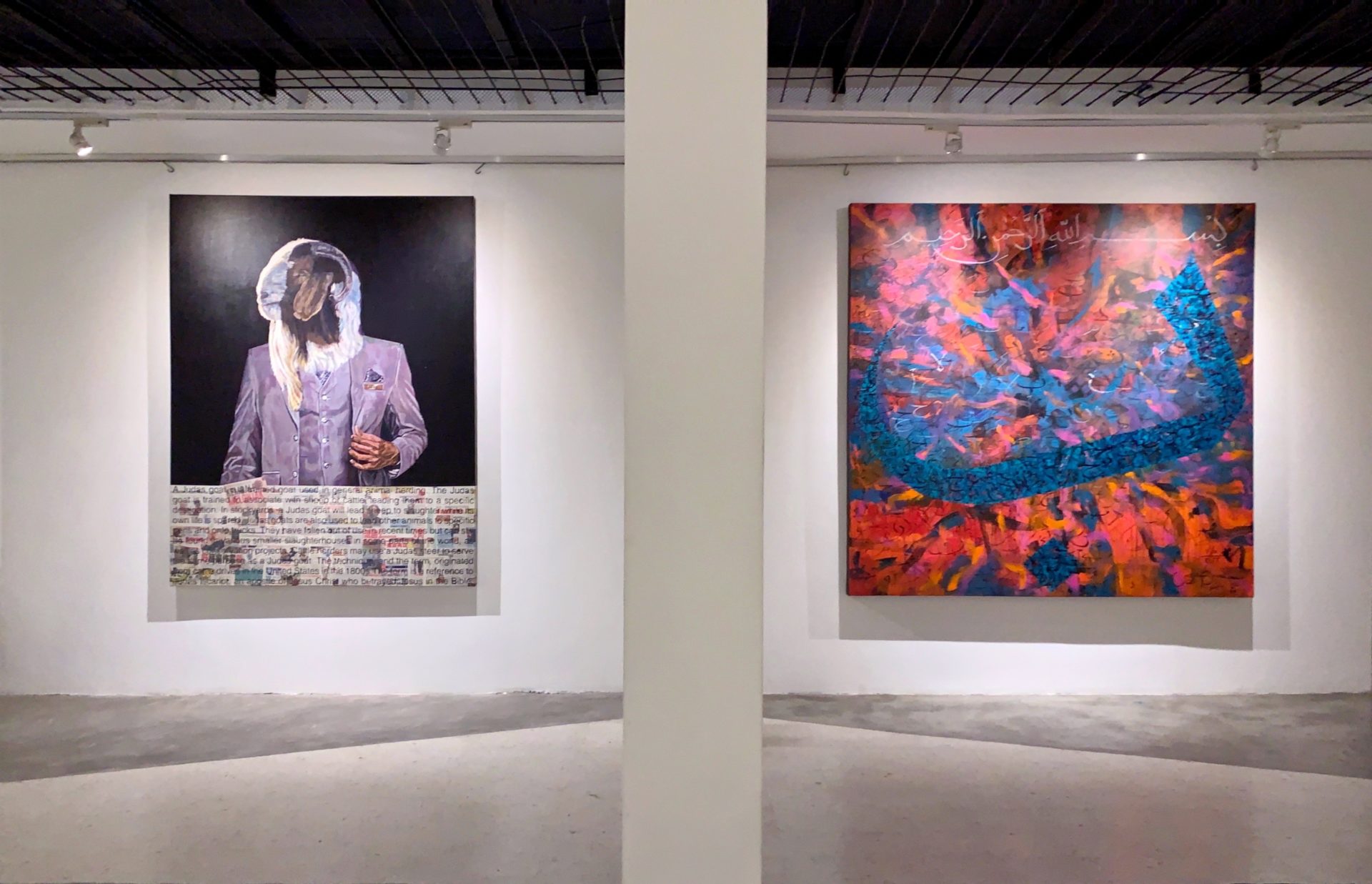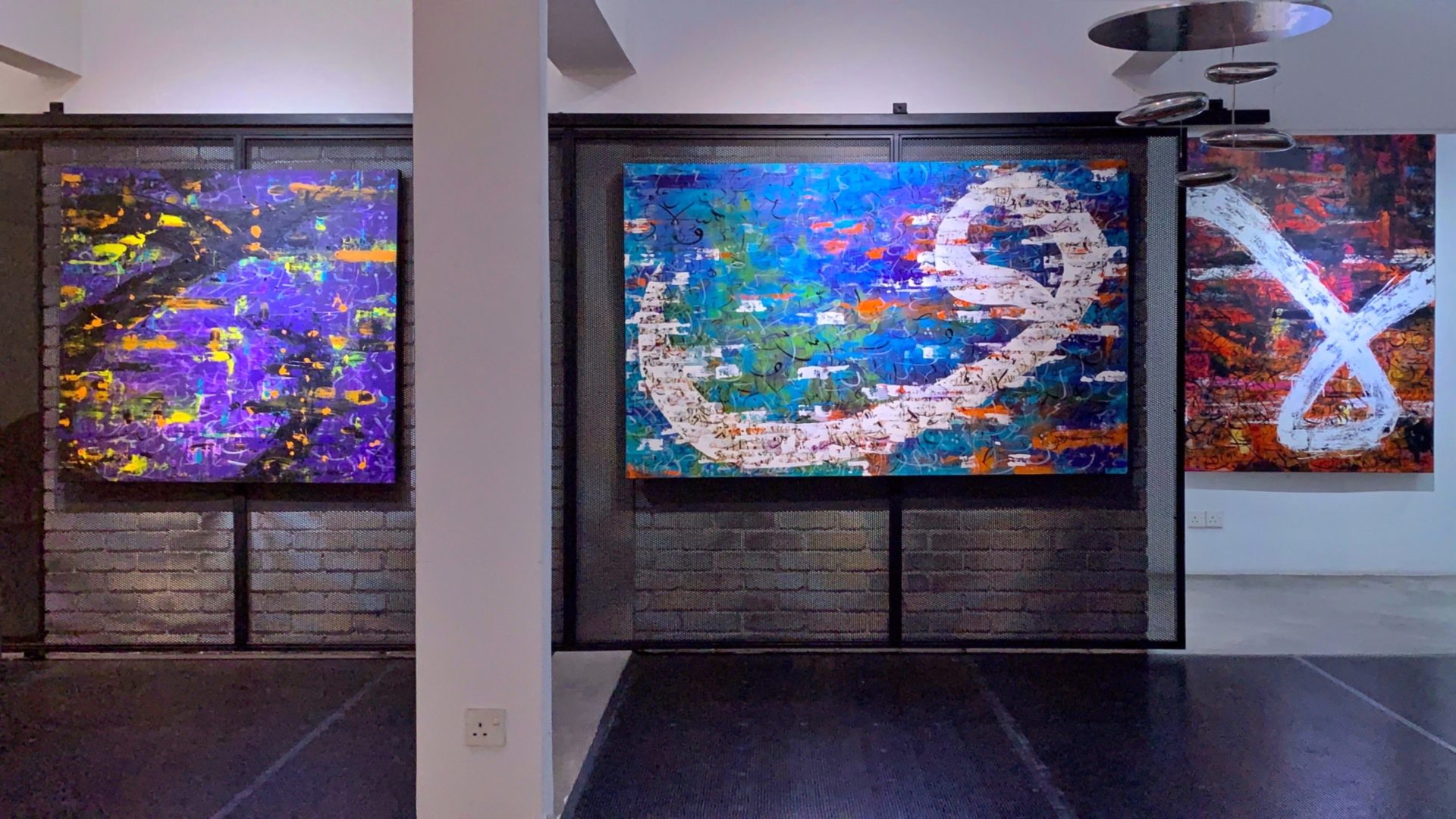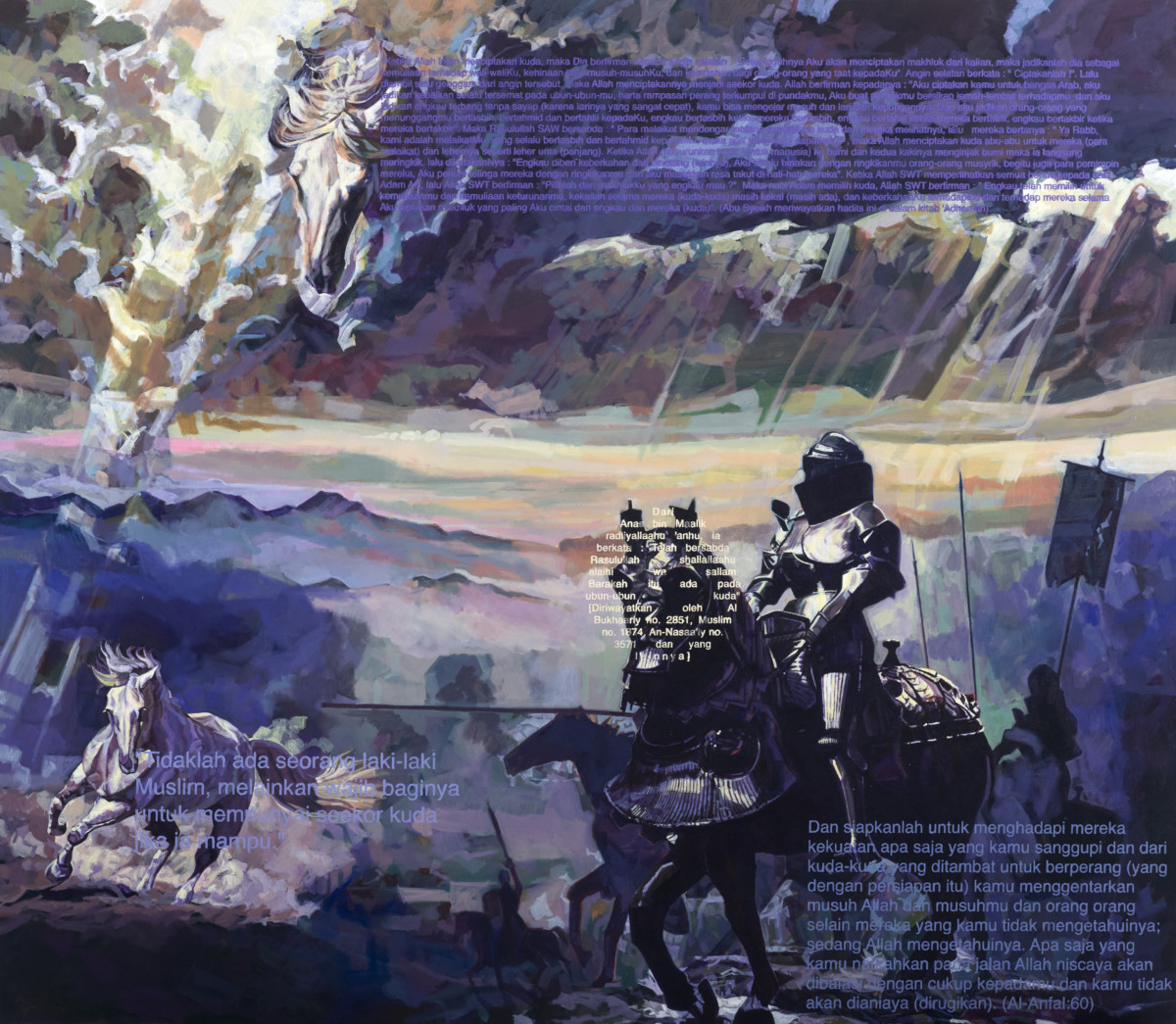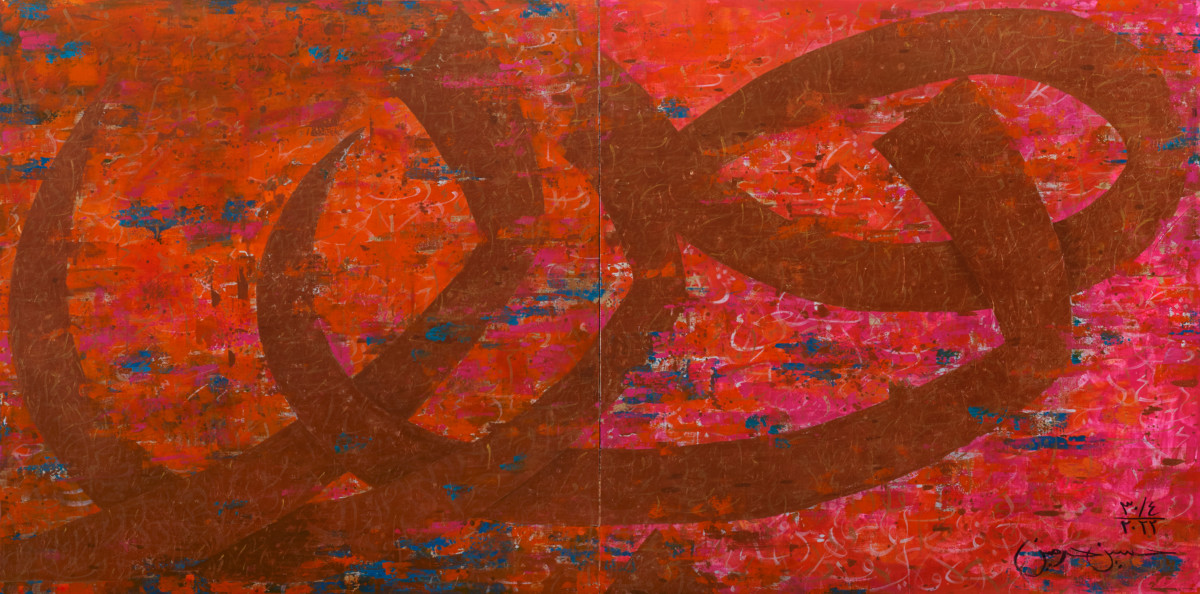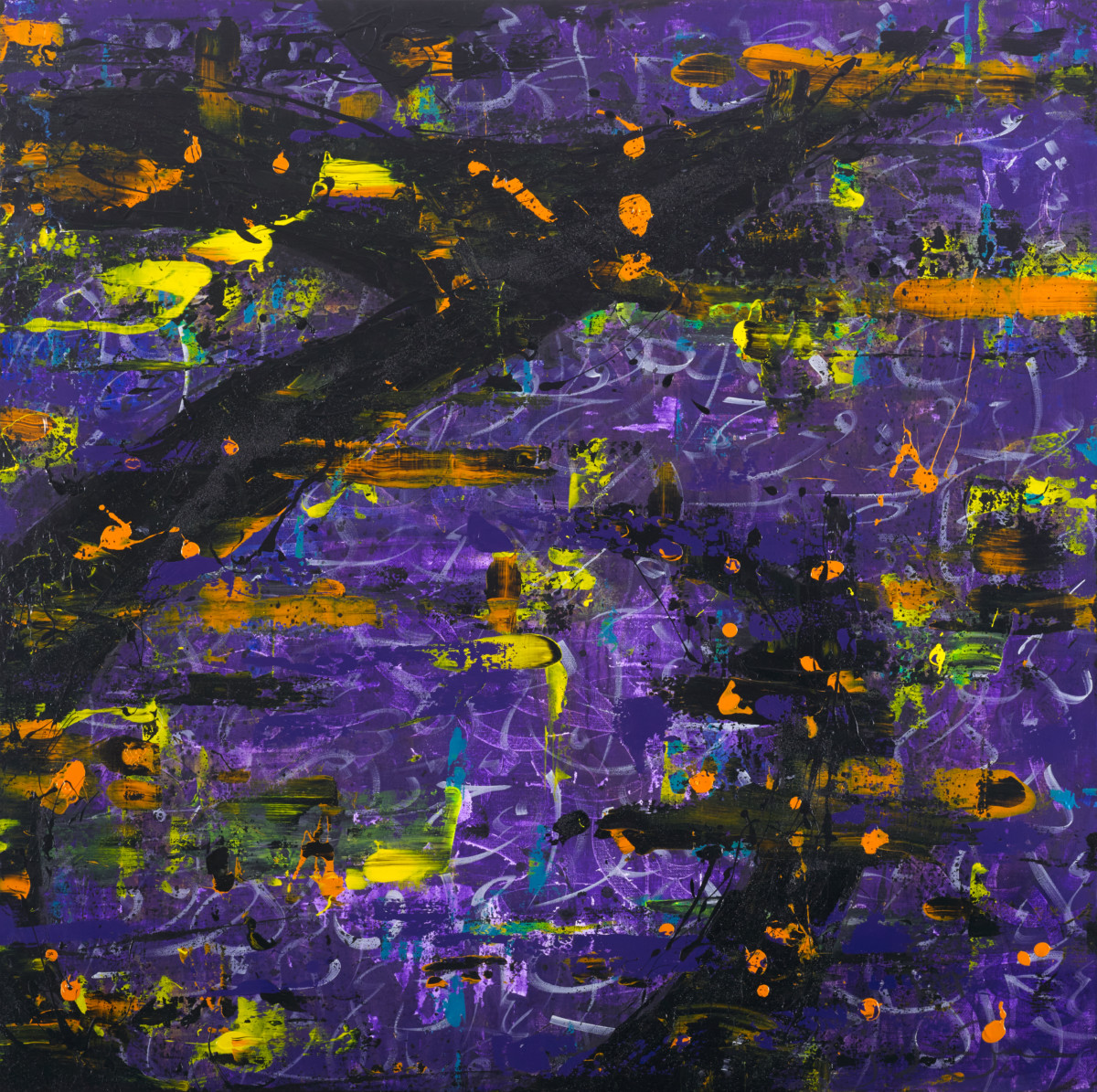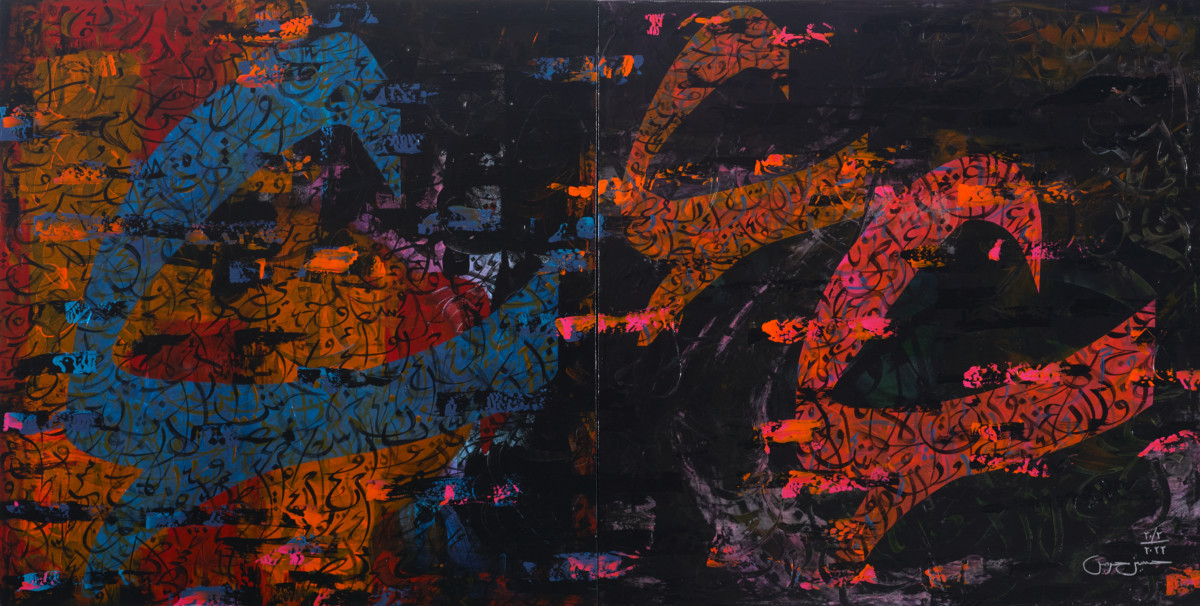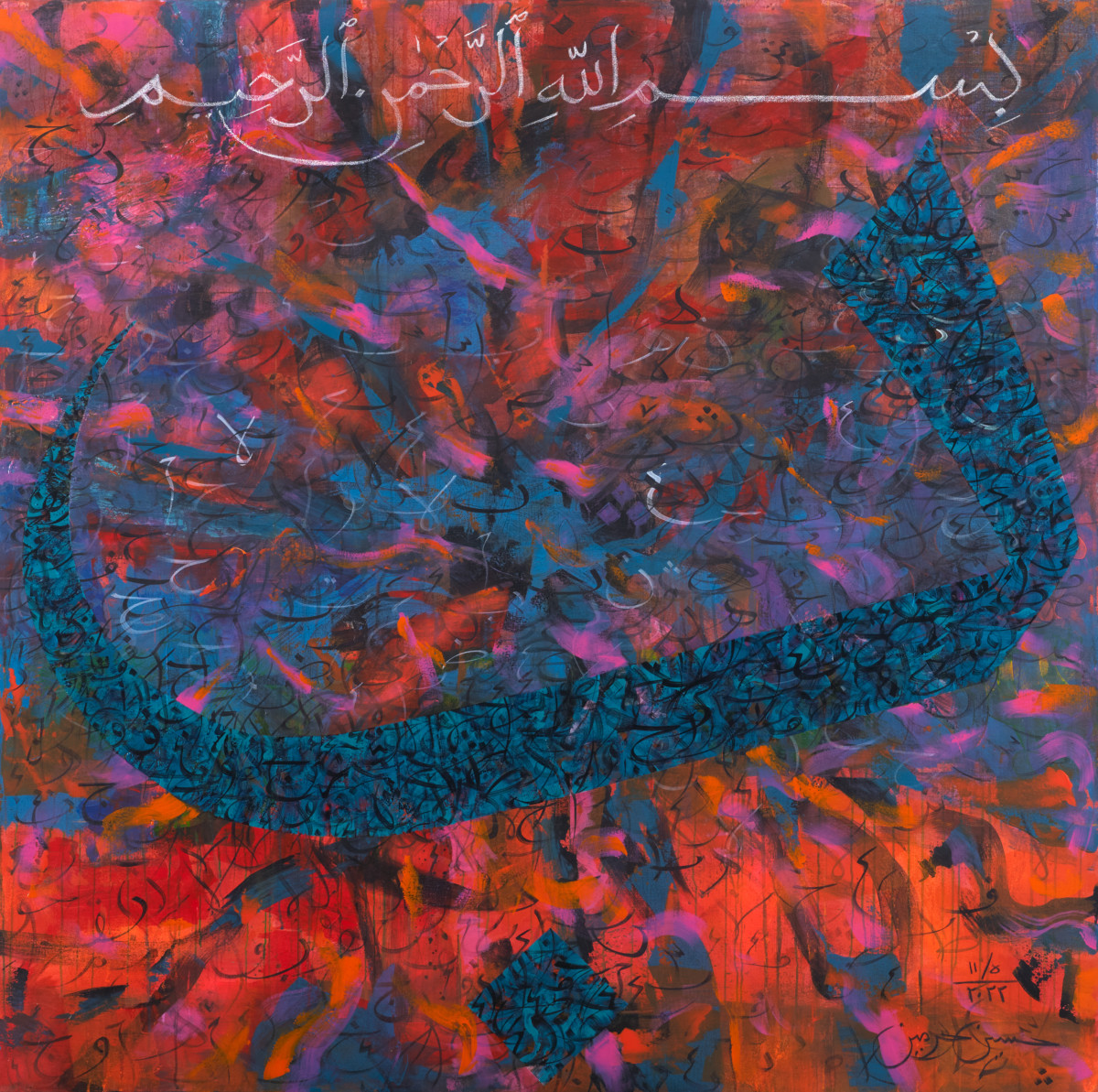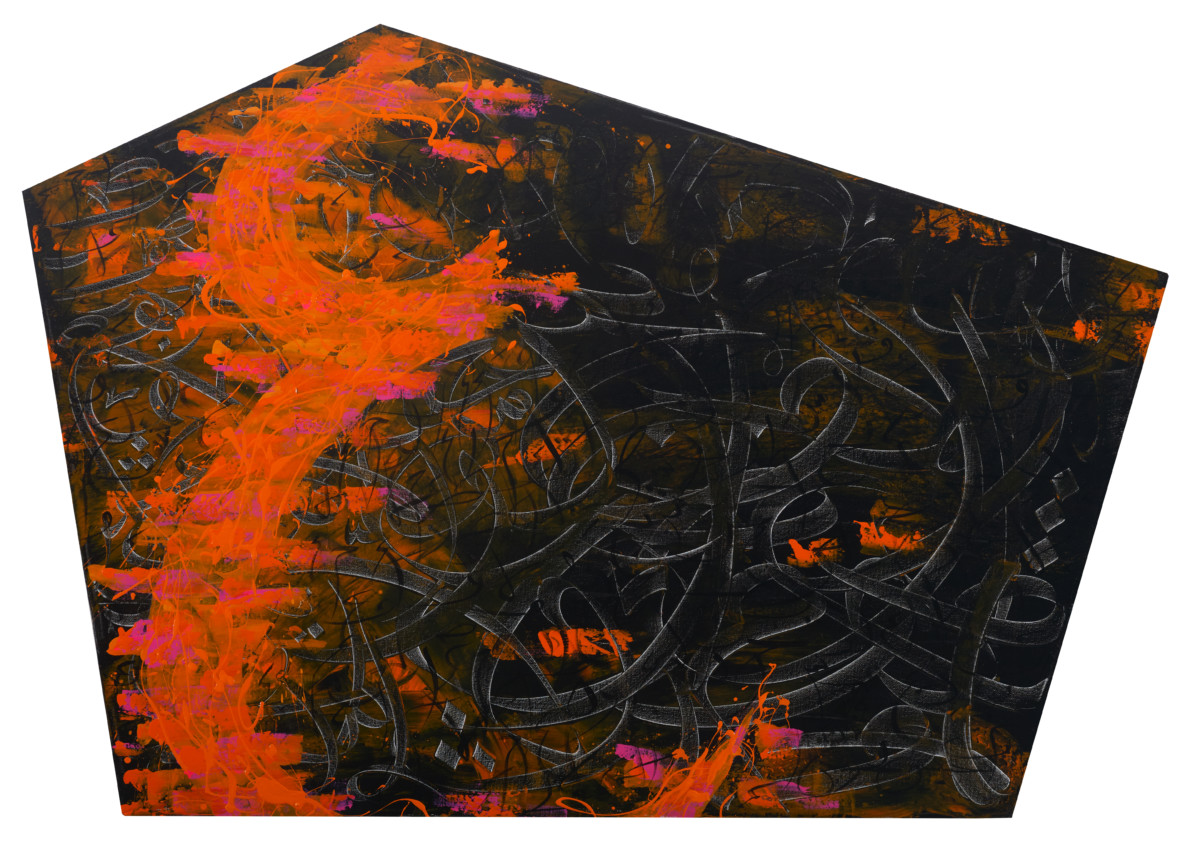Higera
Two-men Exhibition:-
Md Fadli Yusoff
Husin Hourmain
24th May – 24th June 2022
Core Design Gallery, Subang Jaya
*Click on images to zoom in
P R E F A C E
‘Seeing Sense.’ Complexities between the experience of observation (seeing) and that of embracing of the soul should go through the process of shaping senses. Senses may be shaped with values of honest emotions at the precise moment of seeing the subject. Situations differ, and not all can touch the heart. But an artist who is sincere towards his creation and thus build, in arranging innate emotions to canvas, shall be able to intuitively interact with the observer, spiritually. This soulful communication is very subjective, and it goes through the process of ‘opening’ up the emotions of both partakers (artist and viewer), with tendency to invoke fragments of feelings that are significant. There is no institution of art that can teach one to ‘see’ senses. It is an inbuilt software that is little used by humans, because the application of codes is too intricate and time consuming; and the results would be too layered.
— An excerpt from Seeing Sense by Shooshie Sulaiman, written in the 1st Museum Piece catalogue, a solo show by Md Fadli Yusoff, published by 12 Gallery (now defunct).
The idea of seeing sense could not have been further emphasised in a world trying its best to make sense. For the past two years since the pandemic struck, seeing sense might as well have been impossible. What is there to see when one was forced to stay ‘unseeing’ in uncertainty? Nothing was making sense — an unseen disease that kills and the continuous consequences that came after; how are we supposed to see sense in it?
Undeniably, everything happens for a reason — were we not faced with such adversity and global calamity, we would have continued in our blissful ignorance, unaware and unbothered. This rapid transition in the way we lived for the past two years has indefinitely altered our perceptions of how we should have lived — rightfully so, that over the years, became increasingly detrimental. What is done cannot be undone, and for a minute, I could believe we did stop to think; has it happened at all? The passing of time has felt like a memory long forgotten, frustratingly unreachable.
Have we become insensate, by then? Have we tried, again, to see what sense we have left? Ironic to acknowledge that the loss of senses was once the indicator of this disease that we are forced to live with now — an era of endemic, they say, as we begin anew. Perhaps this is the course of life we were meant to tread on hereinafter, but perhaps not. We are mere observers; we refrained, to an extent that we surmised, on our own, that this could potentially be the end. No need for the sense for it, no facts to back it up, no extreme cautions to warn us about it, even.
But once in a while, a reminder came, intentional or otherwise. Here is an exhibition that reminds us for seeing that sense, and experiencing that sense — a somewhat, quite religiously speaking, spiritual migration of thoughts that is self-possessed and filled with restless internal observations. Here is Higera, a duo show by Husin Hourmain and Md Fadli Yusoff presented by Core Design Gallery that introduces a visually striking body of works, yet are poles apart in their perception of our current times. It is a relevant and intimate journey that they have partaken to understand and reflect on, whether for the betterment of their innerself or in their unfaltering artistic practices.
The concept of migration is not something new in a Muslim World. Historically, it had made an impact that changed the course of Muslims’ lives to this day. The religion of Islam, while clear in its initial trajectory of what it meant to migrate, also brings to light the duplexity and complexity of the act. It is not merely a change of abode, but a spiritual change as well.
“In Islamic jurisprudence, it has a specific meaning, namely, the duty to migrate from the surrounding of unbelief towards a society where Islamic rules are prevalent, following the example of the Prophet and his Companions, who migrated from the infidel, polytheistic Mecca towards Yathrib which, with the support of the Ansar, was to become the City of the Prophet, the basis of the historical body politic of Islam. So we see hijra, before anything else, being discussed by religious scholars as a religious principle to be performed as a duty under certain conditions. Throughout Islamic legal history, a doctrine of hijra was established, not only questioning the movement of people but also investigating the movement of converts, traders and preachers.”
— excerpt from Migration and Islamic Ethics Introduction by Ray Jureidini and Said Fares Hassan, 2020
From an artistic point of view, migration could have easily meant an artist’s progress towards change — be it in terms of their style or technicality, change is necessary and crucial, to some extent. For some artists, changes are needed as a response — to get into detail is a feat, however, as these responses are always varied and exclusive to each experience.
Higera as a duo show put an example of how artists react and respond to change. For Husin Hourmain and Md Fadli Yusoff who has been in the art industry as practising artists for decades, changes, as described by them, eventually resorted to the concept of ‘migration’; of thoughts and actions, of spirits and bodies. A prevalent concept in Islamic teachings as well as history, their attachment to it is admirable as it takes an in-depth understanding and practice for the concept of hijra to truly be applied in a contemporary art form, let alone in practice. Contextually, Higera developed into a mutual consensus between these two artists, as discussed incessantly in the past months leading to the present with the gallery. While hijra in its modern Arabic meaning is quite straightforward, this exhibition does entail a revisit of the artists’ previous works; evidently in terms of style, and for some of the works, the contents.
As Malay-Muslim artists, their experiences collided interestingly and not so differently either; for one, migrating to their respective hometowns and setting up studios in pursuit of a better working environment to continue their practice. The decision to move their studios is not only for art’s sake but to strive for different perspectives and atmospheres while creating. Achieving this seems to be an important stage in their life, and conceivably even a timely decision.
The past becomes the present, as the present reflects the past. The duo artists place the importance on hijra as something artists could face at any stage of their artmaking. Stylistically different, yet inherently the same — each of the artists possesses a distinct quality that has marked them as prominent art practitioners locally, both for their critical commentary in conveying arts that resonate with the public.
extracted writing by falil johari

